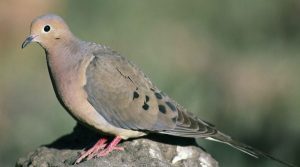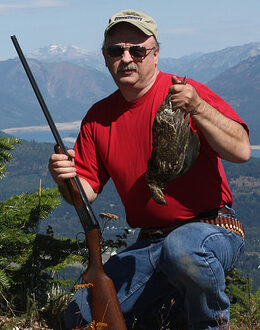
By Dave Workman
Editor-in-Chief
A few years ago, I wrote with tongue only partly-in-cheek about a sales ad in the newspaper where one of the sporting goods stores was advertising a sale on “dove loads” because of the upcoming season opener, which occurs Wednesday, Sept. 1 this year.
“They’re advertising shotshells for doves,” I quipped. “Those guys know it’s impossible to hit doves! I’ve proven it repeatedly.”
Still, the traditional Sept. 1 mourning dove opener in states from Delaware to Oregon brings out tens of thousands, if not hundreds of thousands, of shotgunners in pursuit of these swift-winged migratory fowl. Check your state’s regulations for hunting hours and bag limits, and make sure you purchase more shotgun shells than you expect to need, because you’ll need them!

I spent more than 20 years writing for a now-defunct regional outdoors publication and the dove opener was a big deal with a devoted following. The Oregon Department of Fish & Wildlife actually has a full page site devoted to mourning dove hunting, with tips on how and when, and especially where to try your luck.
ODFW advises hunters to do some pre-season scouting, but the opportunity for that is all but gone with the opener looming. However, the site does say this:
“Because doves eat seed, if you have access to farmland, scout near fields of wheat and other cereals. Doves will also take advantage of naturally produced seed, especially small seeds from plants like legumes. Burned areas are another good spot to scout as burning may make it easier for doves to find seed. Doves often perch in open areas so look for birds sitting on power lines, fences, or trees with dead, leafless limbs. If you consistently see doves perched in a location or occasionally see doves coming and going, you have found your hunting spot.
“Doves will often use natural features like fence rows, treeline edges, and small bluffs or rims as travel corridors between roosting, watering and feeding areas,” the narrative continues. “Find the route and position yourself along it to hunt. Doves are also attracted to small water features such as waterholes, drying ponds, stock tanks and gravel bars in river systems. The waterholes near feeding areas are usually the most productive. Doves do not like much vegetation around their waterholes so look for areas with a large amount of bare mud, gravel or sand around perimeter. Doves using these sites will often perch in a nearby tree or other structure before dropping in.”
Now, what about guns?
Most of the dove hunting fanatics of my acquaintance prefer a 20- or 28-gauge shotgun, with Modified or Improved Cylinder chokes (or both on a double gun). Some old-timers stick with the 12-gauge, possibly because they throw more shot at passing birds, but maybe because it’s the only smoothbore they own. For shot size, 7 1/2, 8 or even 9 can be found on the dove grounds, and pay attention to non-toxic shot requirements that may be in effect in your region.
Remington, Winchester, Federal and other shotgun ammunition producers offer one or more loads for dove hunting, as they also work for such gamebirds as woodcock and quail. Anybody who can clobber doves consistently should have no trouble connecting with other fowl a bit later in the season.
Doves, in my experience, are finicky about weather. Out here in the Pacific Northwest where I call home, the first hint of crummy weather sends doves darting south to California and even Mexico. So early season shooting is typically best.
Many dove hunters have put out decoys with varying degrees of success, but if you locate water and food in dove country, chances are these coo-birds will start showing up.
The challenge is hitting them. Mourning doves are aerial acrobats extraordinaire. I’ve seen them zip, dart, turn on a dime and sometimes flash by at warp speed.
One other thing dove hunters usually do is bring along a cooler with ice so quickly cool any birds they tumble. It’s important because it’s still summer, and in many regions, temperatures are still rather warm. Quickly field dressing your birds and then getting them into the cooler makes for better table fare.
The most important thing is to get out there because the first shots of the 2021 bird hunting season will be fired at doves, and they definitely play hard to get!



